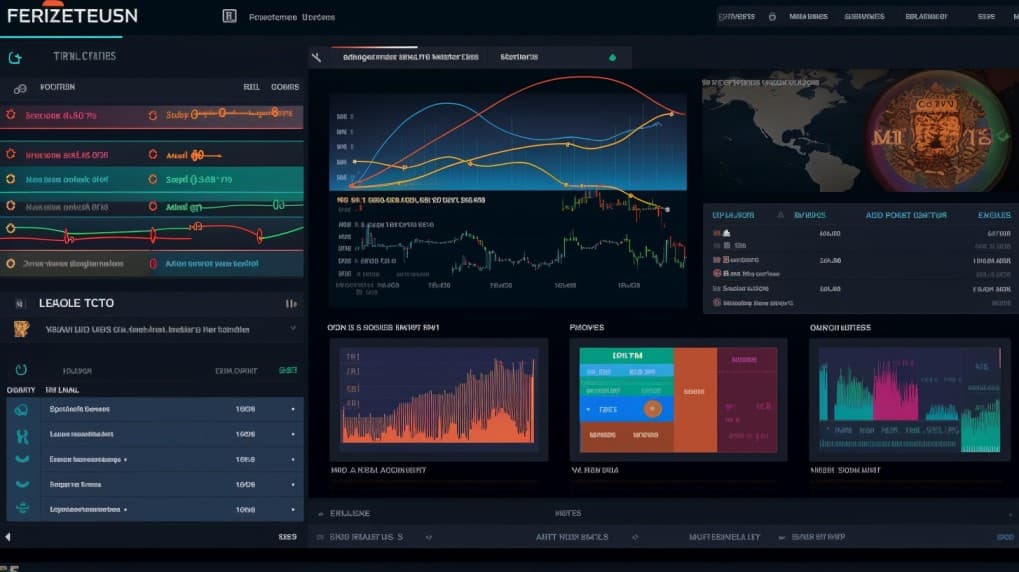
IXC VS ERY
Exchange-Traded Funds (ETFs) have transformed the landscape of modern investing, providing a versatile means to access a wide array of sectors and asset classes. In this comprehensive analysis, we'll delve into a detailed comparison between two prominent ETFs: IXC (iShares Global Energy ETF) and ERY (Direxion Daily Energy Bear 2X Shares). We'll explore key facets including ETF tickers, full names, issuers, sectors, top holdings, capitalization, strategy, tracking, and exposure.
IXC Vs ERY: Overview
IXC and ERY are distinct ETFs that target the energy sector but with differing strategies. While IXC aims to track the performance of global energy companies, ERY employs a unique strategy designed to provide twice the inverse daily return of energy sector stocks. This fundamental contrast results in varied risk profiles and investment objectives, which we'll dissect further in subsequent sections.
IXC Vs ERY: Sectors and Top Holdings
The IXC ETF offers a broad exposure to energy by investing in a variety of companies engaged in energy-related activities, ranging from oil and gas exploration to renewable energy. On the other hand, ERY capitalizes on the inverse performance of energy companies and, due to its 2x leverage, is more sensitive to daily market movements. Diving into sectors and top holdings enables investors to discern the ETF that aligns with their desired exposure and risk tolerance.
 IXC overlap IXC VS ERY
IXC overlap IXC VS ERY
IXC Vs ERY: Capitalization and Strategy
IXC boasts a substantial asset under management (AUM), indicative of its popularity among investors seeking diversified exposure to the energy sector. ERY employs a leverage-based strategy, aiming to provide twice the opposite return of its benchmark index, which consists of energy companies. The difference in capitalization and strategy between the two ETFs introduces distinct opportunities for returns and risks, necessitating careful consideration from investors.
IXC Vs ERY: Tracking and Exposure
IXC seeks to mirror the performance of the S&P Global 1200 Energy Sector Index, providing investors with a way to gain exposure to various energy-related industries on a global scale. In contrast, ERY aims to magnify the inverse daily returns of its benchmark, the Energy Select Sector Index. Understanding the nuances of tracking and exposure mechanisms is crucial for investors as it enables them to make informed decisions aligned with their investment objectives.
Conclusion
IXC and ERY represent two distinct approaches to navigating the complex energy sector through ETFs. For investors seeking in-depth insights into holdings, correlations, overlaps, and other critical aspects, the ETF Insider emerges as an invaluable resource. With its user-friendly app, it furnishes a comprehensive view of these financial instruments and more.
Disclaimer: This article is provided for informational purposes only and does not offer any investment advisory services.
Sources:
iShares: iShares Global Energy ETF (IXC)
https://www.ishares.com/us/products/239738/
Direxion: Direxion Daily Energy Bear 2X Shares (ERY)
https://www.direxion.com/products/direxion-daily-energy-bear-2x-etf
ERY quote and analysis
Discover the top holdings, correlations, and overlaps of ETFs using our visualization tool.
Our app allows you to build and track your portfolio.
To learn more about the ERY Direxion Daily Energy Bear 2X Shares, access our dedicated page now.
FAQ
Why is IXC better than ERY?
IXC may be considered better than ERY for some investors due to its specific focus, offering diversification.
Does ERY beat IXC?
ERY's performance relative to IXC will vary over time, depending on market conditions.
Should I invest in IXC or ERY?
The choice between IXC and ERY should align with your investment goals, risk tolerance, and desired exposure.
Are IXC and ERY good investments?
Both IXC and ERY can be suitable investments depending on individual investment strategies, goals, and risk profiles.
What is the correlation between IXC and ERY?
The correlation between IXC and ERY can vary over time, reflecting differences in performance.